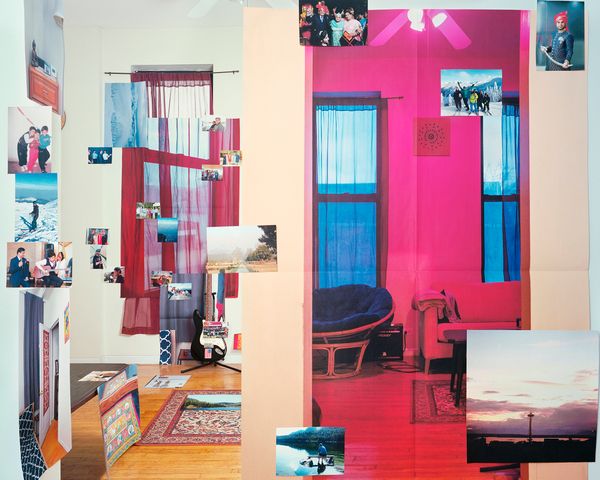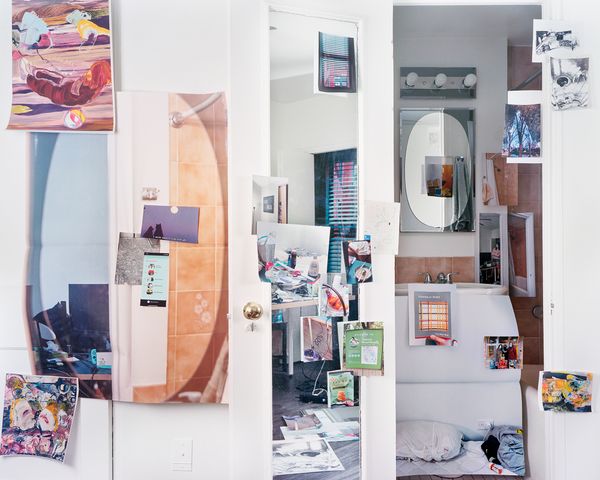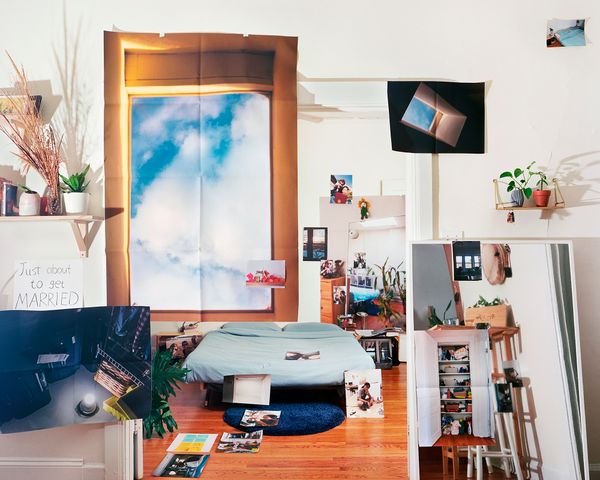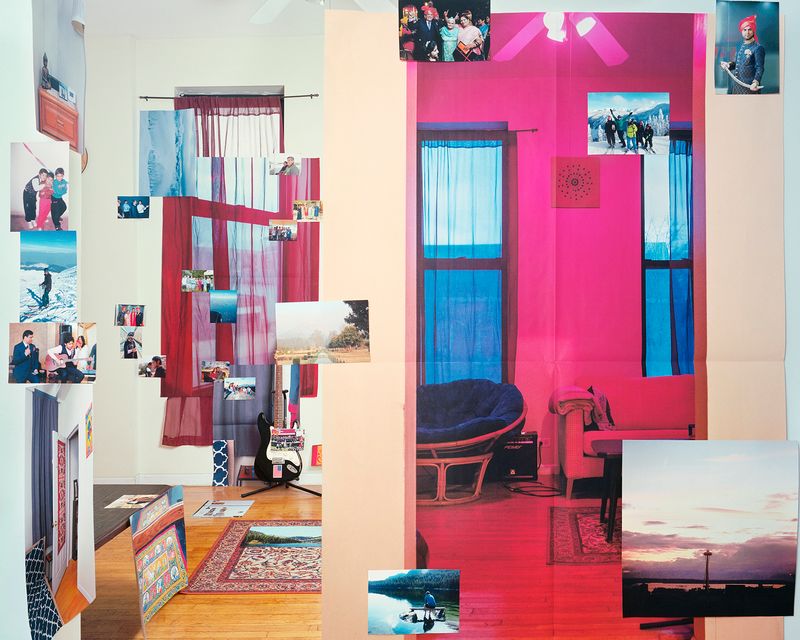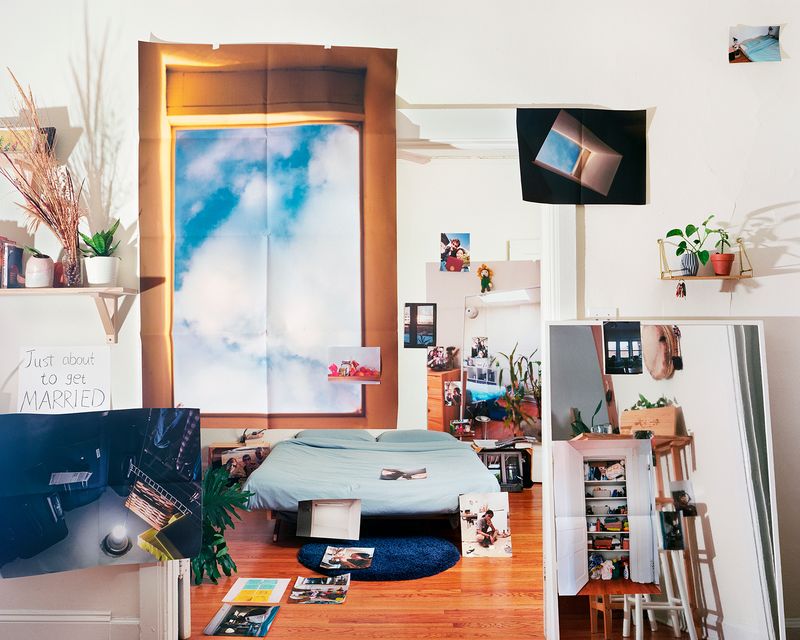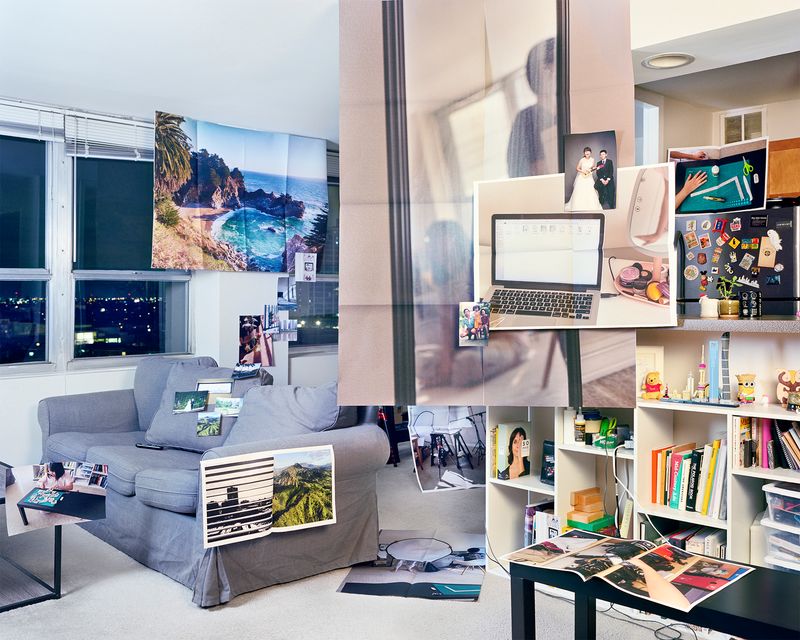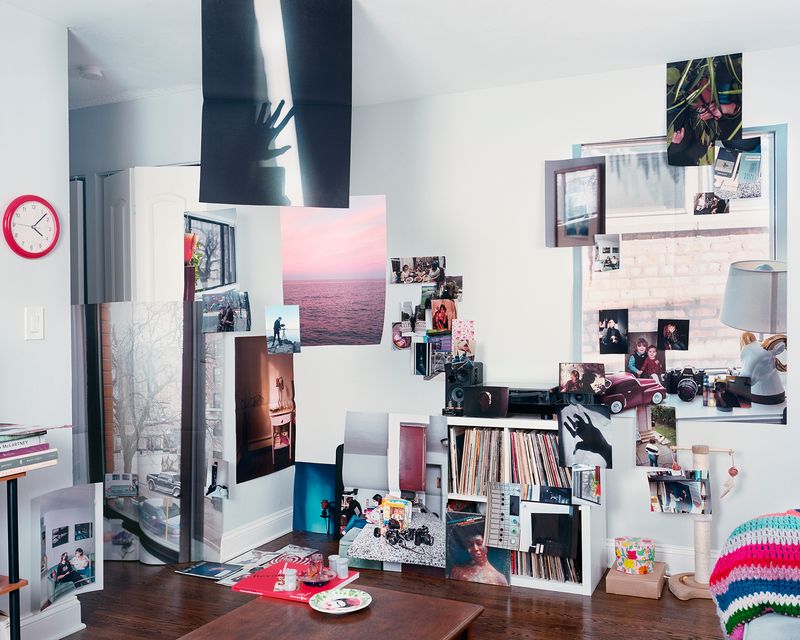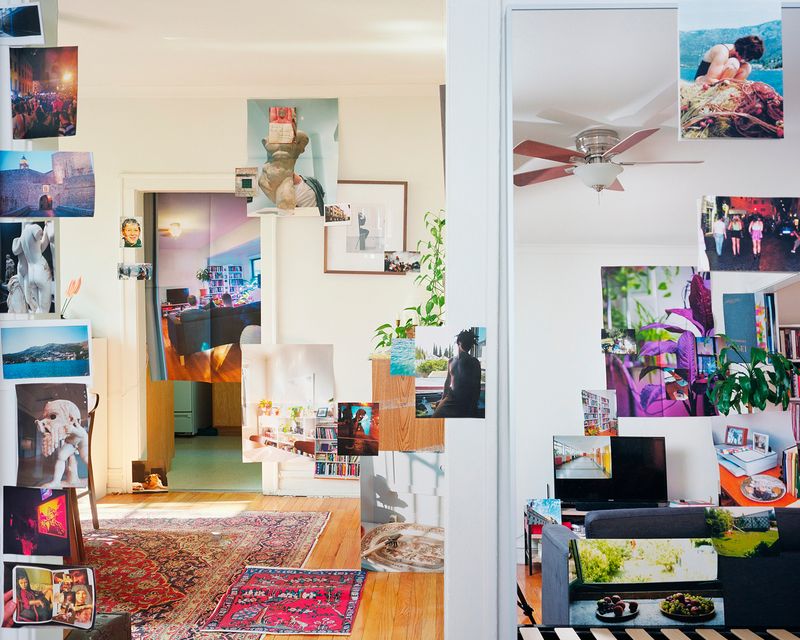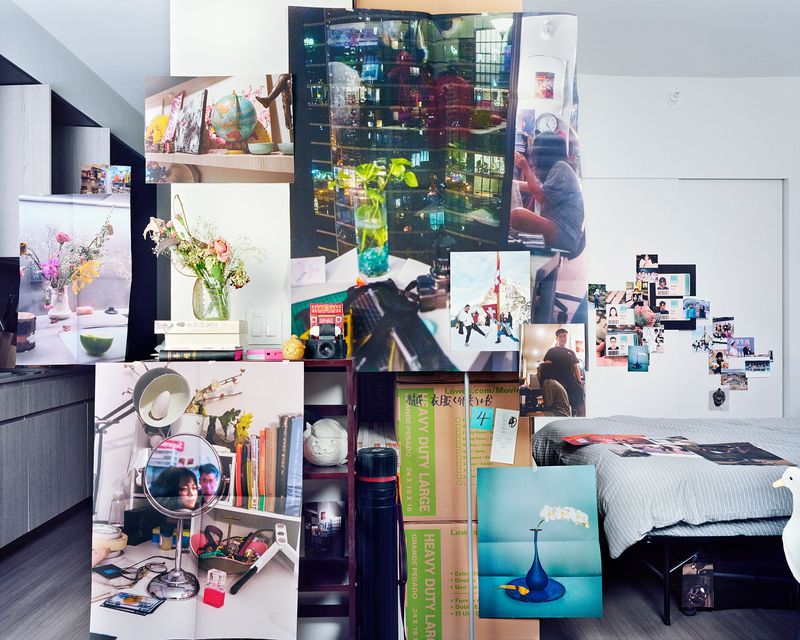Guanyu Xu Explores Identity and Representation
-
Published10 Nov 2022
-
Author
In Resident Aliens, Chinese photographer Guanyu Xu examines the concept of a created identity and delves into the precarious situation of immigrants with a complicated layered installation of pictures within a temporary environment.
While living in the U.S. towards the end of 2019 and figuring out his own visa process, Guanyu Xu, who’s originally from China but lives in Chicago, started working on Resident Aliens almost organically, drawing from his own experience and then including the stories of other people who were going through similar visa issues—eventually all exacerbated by the hurdles brought by the pandemic.
Xu traveled to their homes and photographed their surroundings, including their personal images as well as the photographs he took in their locations during the first session. The outcome is a complex and rich photo installation that combines all of those elements—portrait, still life, architectural space—a multilayered and multispatial depiction of their lives through various juxtapositions and angles.
“Through the process of sharing their own photographs from their past, photographs of their family, photographs of the food they eat, the places they've been, or just little things they’ve cared for in their life… I wanted to include those details and those moments in my installation, so that I can provide more complexity to each individuals,” Xu says. He was intrigued by the precarious living situations that many immigrants face, as well as the space they call home, despite the fact that it’s frequently transient due to their legal status.
His work tries to portray the precariousness of the immigrant's situation, as they frequently move from one location to another—for job or study—and are denied a secure life. However, it also addresses the experience of immigrants during the pandemic. “We all experienced the pandemic in the United States... but we all also experienced the pandemic quite differently,” he says. Many of them became stranded as a result of the travel ban or the delay and suspension of visa processing.
Conceptually, Residence Aliens demonstrates the complexities of such situations, emphasizing the paradox of living in a precarious state. The photographic medium emphasizes this ambiguity. “You see a window, but then realize it's a photograph of a window: It speaks to the evanesces of something so very tangible, or that at least it should be, and it is for some people. But not for everybody.” That expressed the challenge of living with dignity, finding a place to call home while knowing it is just temporary.
The pandemic widened this chasm: As much as we all lived for months alone in the solitude of our homes, shielded from the outside world as an unknown virus raged, the precarity of a temporary leased property exacerbated the bleakness of a dangerous situation for others. Similarly, the pandemic created an illusion of reality: “You may think, ‘Oh, I have all the freedom,’ but you still have to lockdown in your apartment, looking through the window, imagining you’re free outside. However, you cannot actually move at all.” He wanted to delve deeper into that impasse and contradiction since it relates to the nature of photography.
He also addressed the sense of “disorientation.” Taking into account the experiences of immigrants and marginalized groups, a space or a country is not always “designed” for them. “You constantly have to adjust your own expectations, your own behavior, in order to fit in the so-called ‘norms’.” Xu's method replicated that sense of disorientation by layering pictures within a tridimensional realm to confuse and challenge viewers. Some images are hung from the ceiling, some are affixed on the walls, while still more are pinned to the door or put on the floor. The act of layering signals that these images are constructed, deliberate choices by the photographer, who, as Xu does in Resident Aliens, “wants to remind of the construction of the image, the construction of the identity, the construction of narratives.”
The viewer is challenged to consider how our identity is a construct that is influenced by the pictures we see around us. His purpose is to have the audience consider how to comprehend identity in context rather than thinking about identity as a fixed concept. The photo titles, in part, bear witness to this idea of identity and identification: The titles include the initials of the subjects’ names, the date they first came in the United States, and the date of the photo installation in their homes. That's an allusion to the bureaucracy of immigration paperwork, with each case assigned a number. “When you send your paperwork, you are just a case number to the immigration officer. How do you prove you are a morally good, trustworthy person, to temporarily study or permanently stay here?”
Photographs, in some ways, can play a similar role in mystification. Is it what we see what really is? The act of showing and corroborating people's personal relationships exemplifies this, with images serving as a “farce” of people's experiences.
So, how does an image relate to reality? Again, the immigration procedure, with its bureaucracy, exemplifies that:“Eventually, that also relates to our idea of photography. How do we think about the truth of photography that's similar to how you represent the truth of yourself in an immigration process?” Xu's photographs, even when they have all of the person's details, are not truly representational of his subjects. And yet, it’s ironic to consider the legal documents that “represent” them as a person and verify their legality as a citizen. Even in the complicated bureaucracy of marriage, true intent must be shown, and photography becomes the most appropriate medium. “You have to use photographs to prove you had a relationship, that you have been to different places, meeting different people as a couple. You have to use photographs to prove that to the immigration officer,” Xu says.
“Suddenly you can no longer cherish the romantic trip that you go on with your loved ones. You have to constantly think about, ‘I need to document this moment, so that I can present that to the state’, to this larger system that eventually will dictate the trajectory of your life.”
All photos © Guanyu Xu, from the series Resident Aliens
--------------
Guanyu Xu is a Chinese artist and photographer based in the United States. Find Xu's work on Instagram and PhMuseum.
Lucia De Stefani is a writer and editor focusing on photography, illustration, and everything teens. She lives between New York and Italy.
--------------
This article is part of the series New Generation, a monthly column written by Lucia De Stefani, focusing on the most interesting emerging talents in our community.
